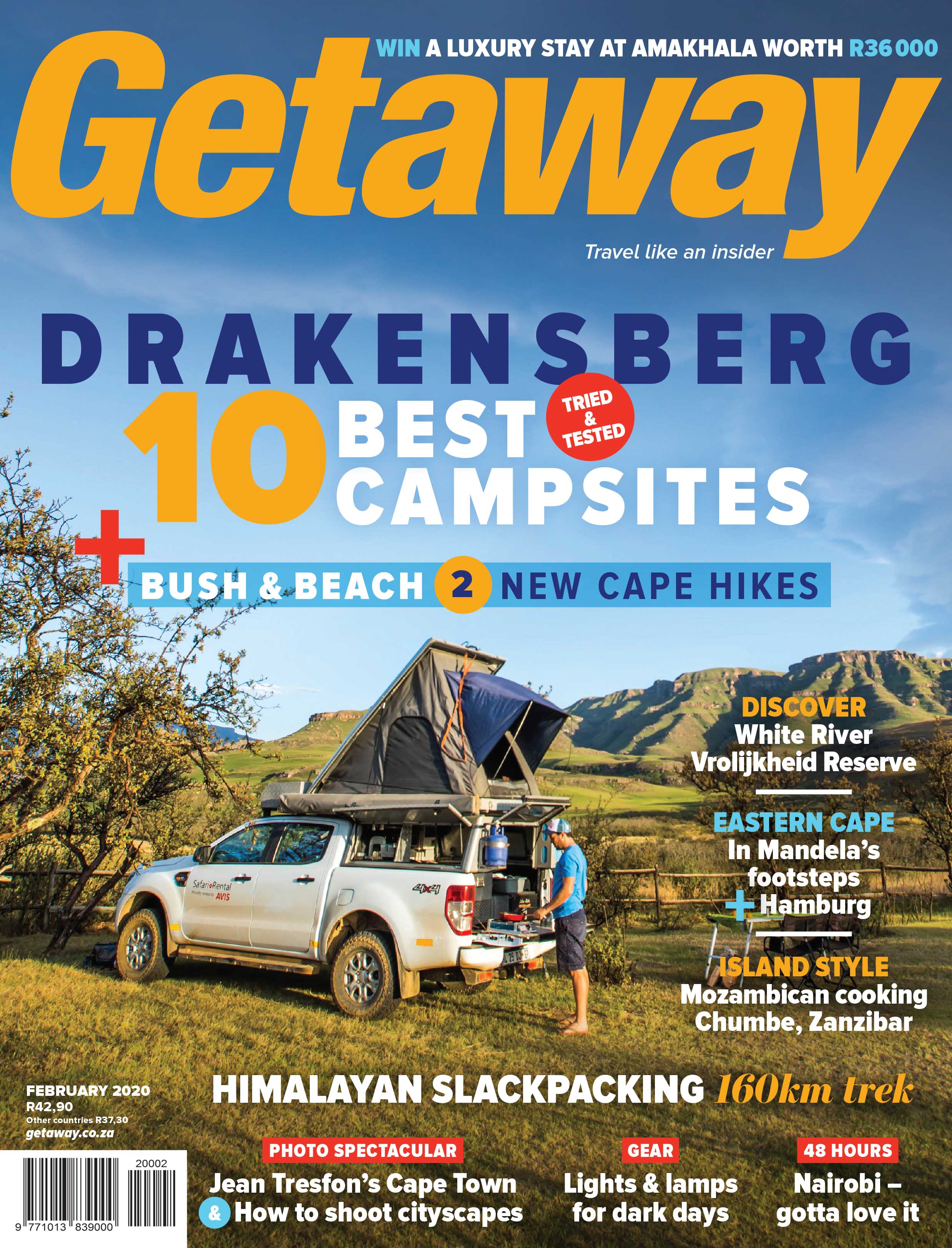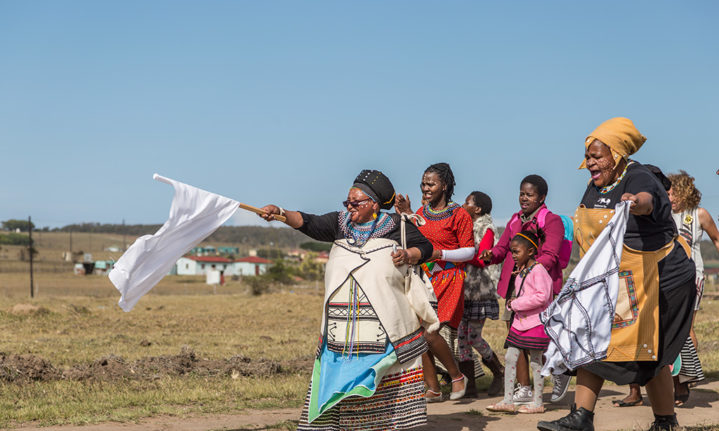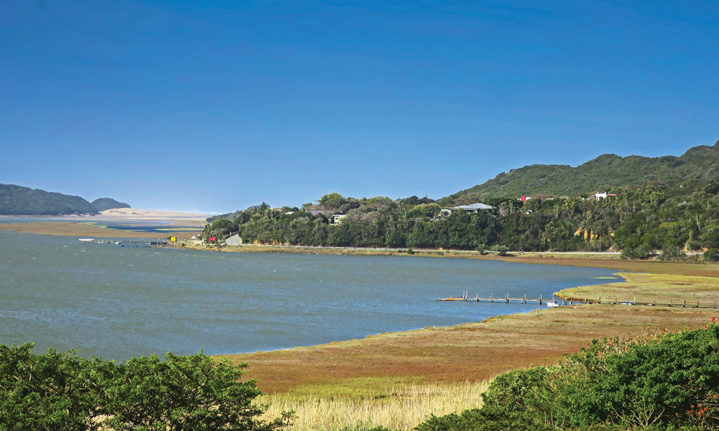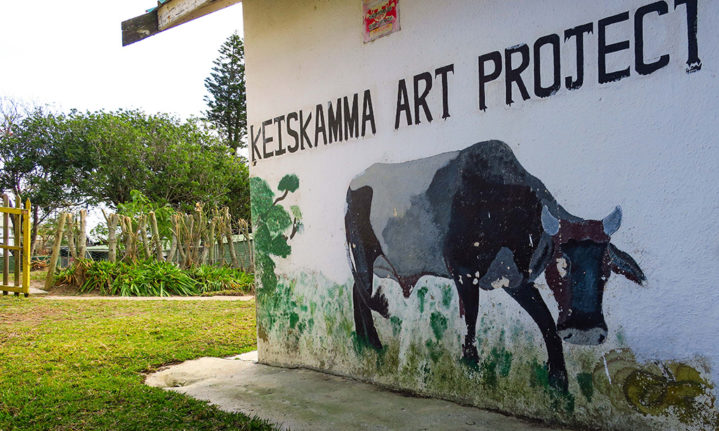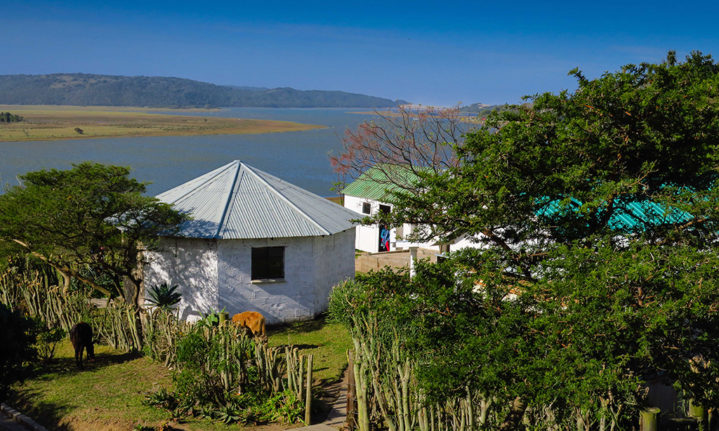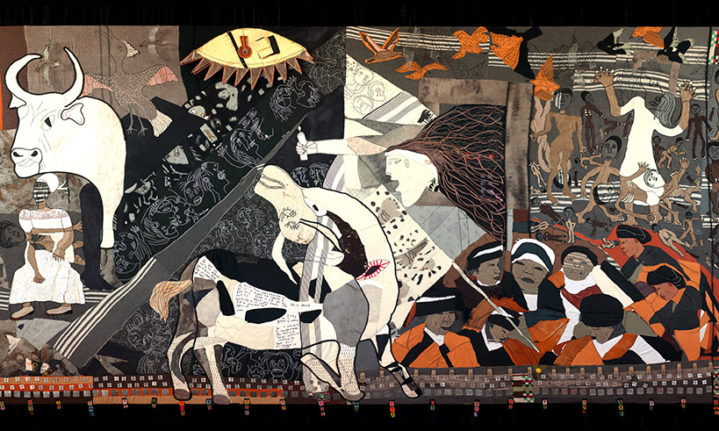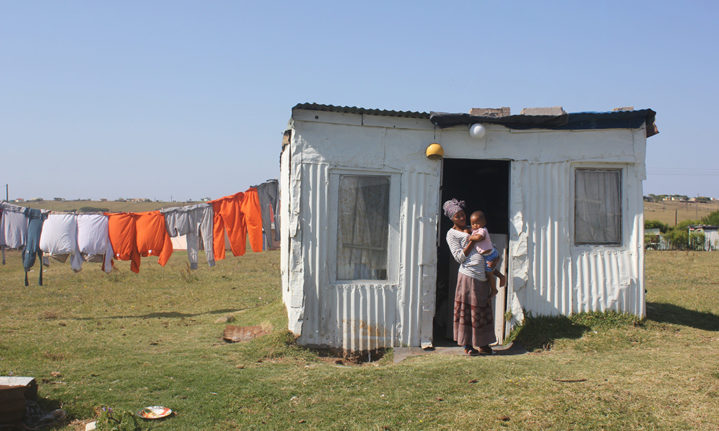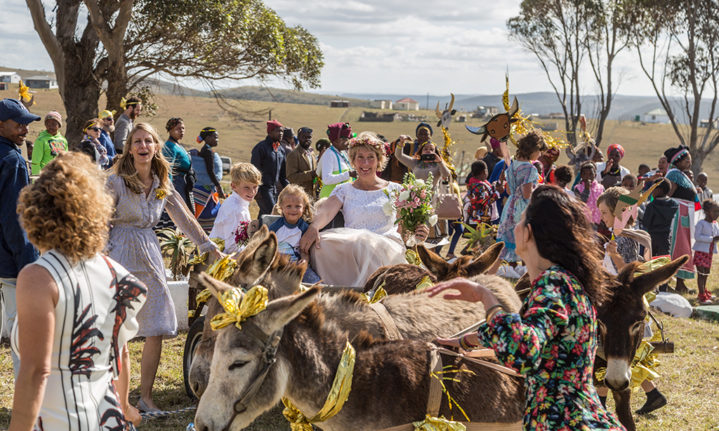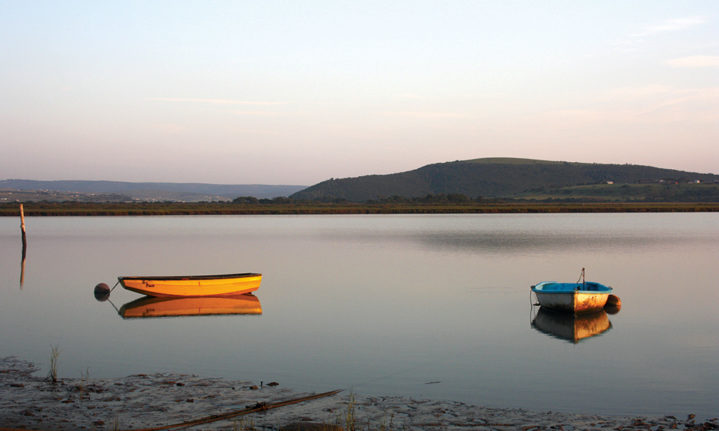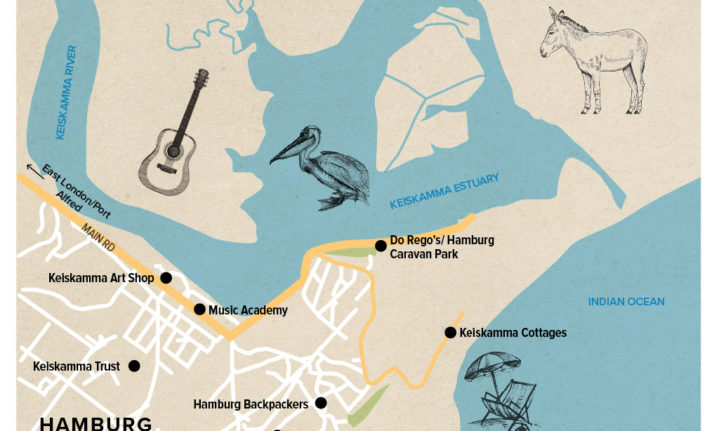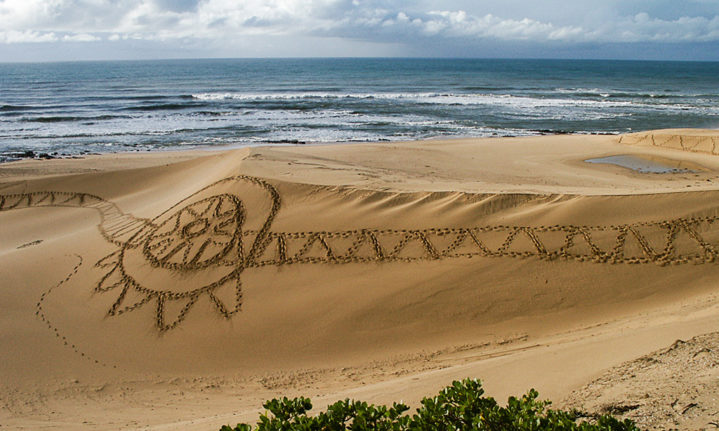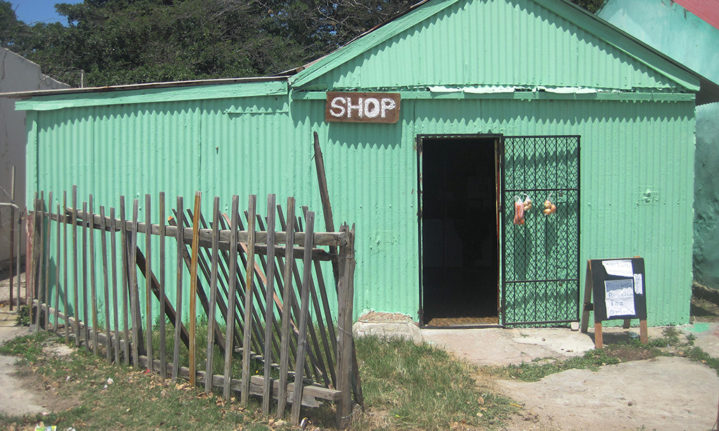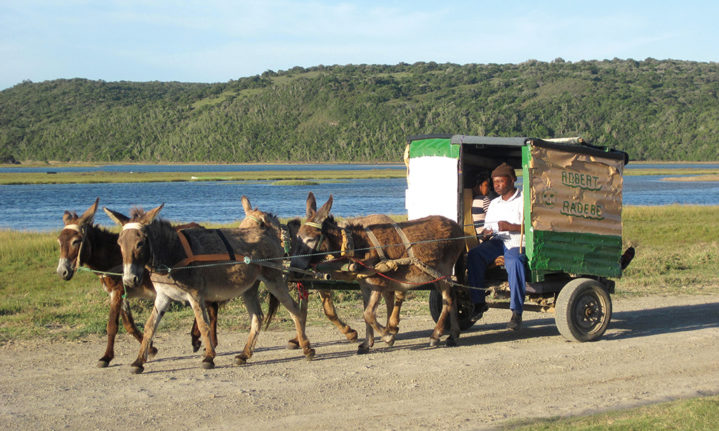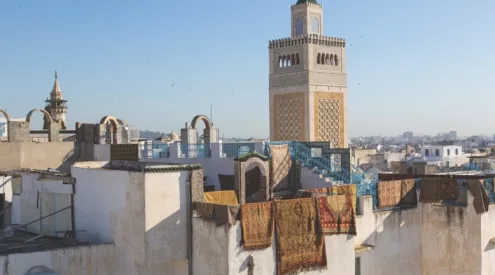What do Richard Gere, the Duke of Buccleuch and a pig called Rooster have in common? You’ll find the answer 14 kilometres down a dirt road between East London and Port Alfred in the Eastern Cape.
Words by Andy Hofmeyr

Image credit: James Walsh
Most people driving along the R72 towards East London ignore the tatty sign directing them down an uninviting dirt road. A pity. The road’s not at all bad and at its end lies the little enclave of Hamburg, nestling at the mouth of the Keiskamma estuary.
When I first visited Hamburg, I was reminded of the villages of my childhood holidays – no billboards, no fast-food joints, no supermarkets; rather cows, goats and chickens sharing the roads with a few cars.
Hamburg was settled in 1857 by demobbed members of the British-German Legion who had fought alongside the British in the Crimean War. In naming the place, the Germans must have been feeling homesick. But gimme this Hamburg any day.
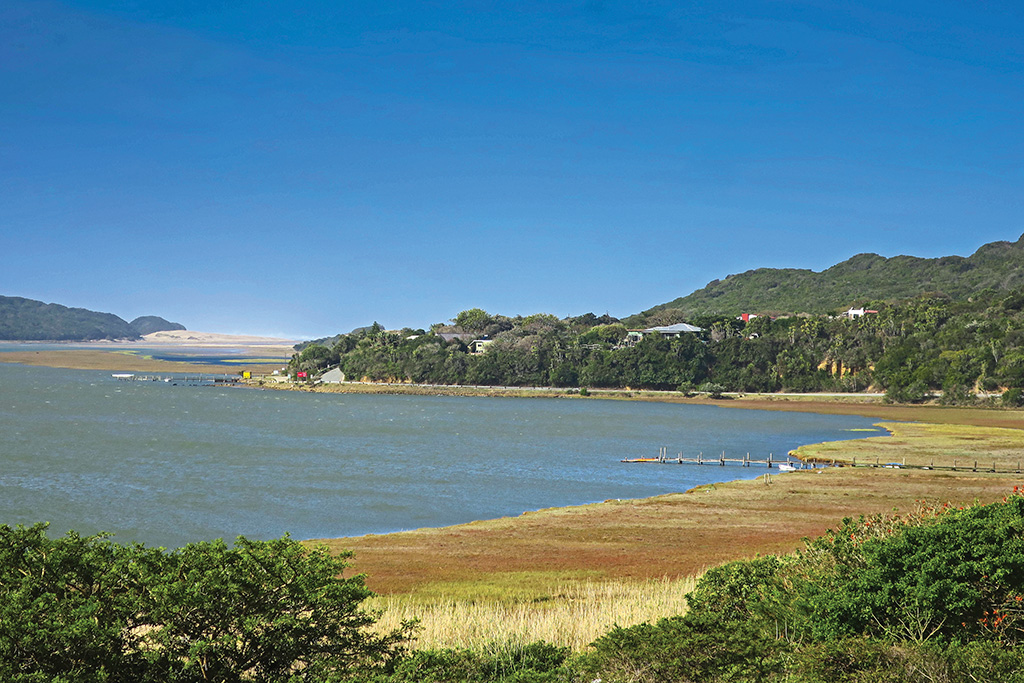
Hamburg village is surrounded by water on three sides – river, estuary and Indian Ocean. Image credit: Marion Whitehead
In the early 20th century it was a typical holiday resort comprising two hotels and a campsite with pub on the estuary. Then, in 1972, it was incorporated into Ciskei and fell into disrepair. Title deeds to homes were lost; the hotels fell over; and most of the houses lost their roofs, windows and doors.
In the 1980s hotel magnate Sol Kerzner, his way paved by malleable governments and ‘favourable’ laws, planned a casino development in Hamburg, intending to replicate his successes in Transkei and Bophuthatswana. Then came 1985 and PW Botha’s infamous Rubicon speech. The development was abandoned and Hamburg remained as it was. Never would I have imagined I’d ever be grateful to President Botha for anything!
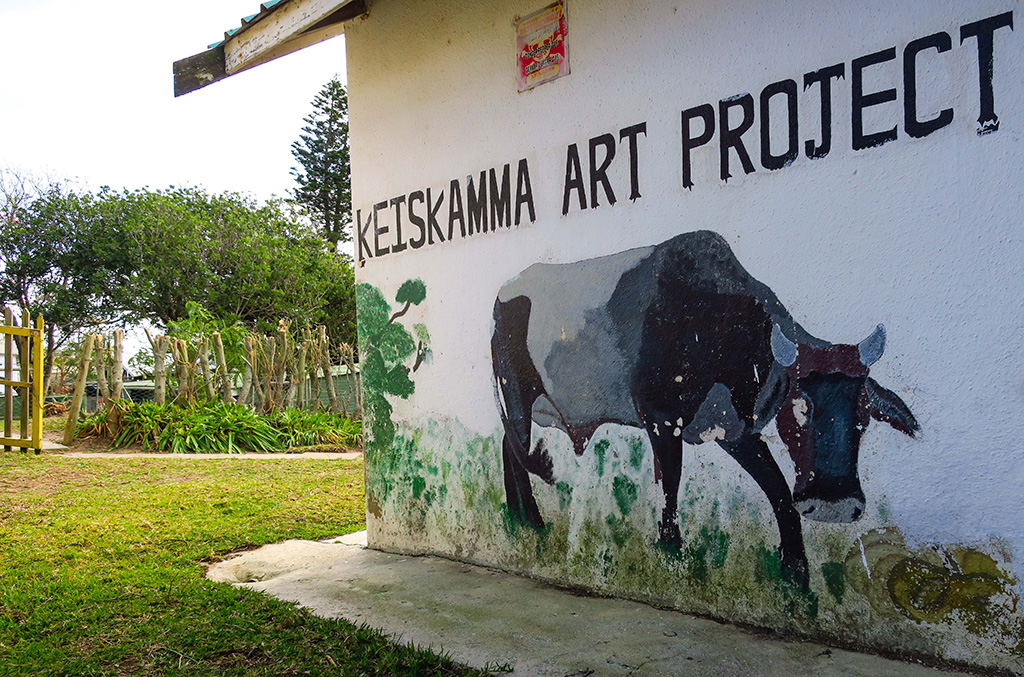
Where 150 previously unemployed women learnt to craft masterpieces. Image credit: Marion Whitehead
As the Keiskamma River reaches the coast it opens into a wide floodplain, bordered by nature reserves that are home to hundreds of species of birds. Among these feathered denizens is Fred, the lone pelican. For more than 15 years he (or she – no one’s quite certain) has kept counsel with the Goliath herons, African fish eagles and seasonal flamingos, striking up the occasional dalliance with visiting pelicans who all sadly abandon him.
The estuary, permanently open to the sea, offers excellent fishing – for years the world-record kob catch was held here. And between February and May you can feast on tiger prawns that spawn here. Delicious river crabs are abundant and a trip to the rocks will yield wild oysters, mussels and alikreukel. There’s also superb canoeing between the estuarine
islands.
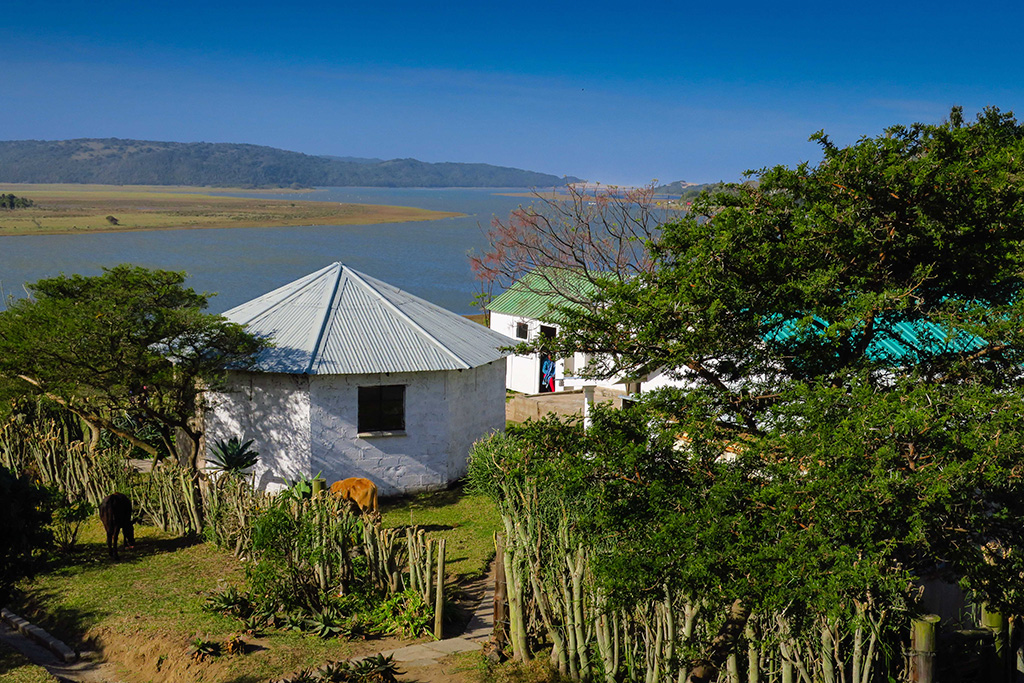
dwellings are simple and life is slow on the Keiskamma Estuary. Image credit: Marion Whitehead
Some time back, Hamburg’s Blue Flag beach was voted one of SA’s most beautiful secluded seafronts, and you usually have it all to yourself. A seaside stroll offers up a plethora of shells, and you may even find pieces of Qing Dynasty pottery that have been washing up here since the Bennebroek sank south-west of the Keiskamma mouth in 1713 (there were only 77 survivors). Her anchor stood outside the Hamburg Hotel before mysteriously disappearing in 2013.
For years, those enjoying an early-morning walk would stumble upon the sand art created by musician and artist Vuyisile Gaba on the beach in the dead of night. Vuyisile says that when it rained at night, God would bid him to dance patterns on the sand. While Gaba still plays his beloved guitar outside his home, he’s getting on, and it’s unlikely he will make any more nocturnal forays into the dunes … but who can be sure?
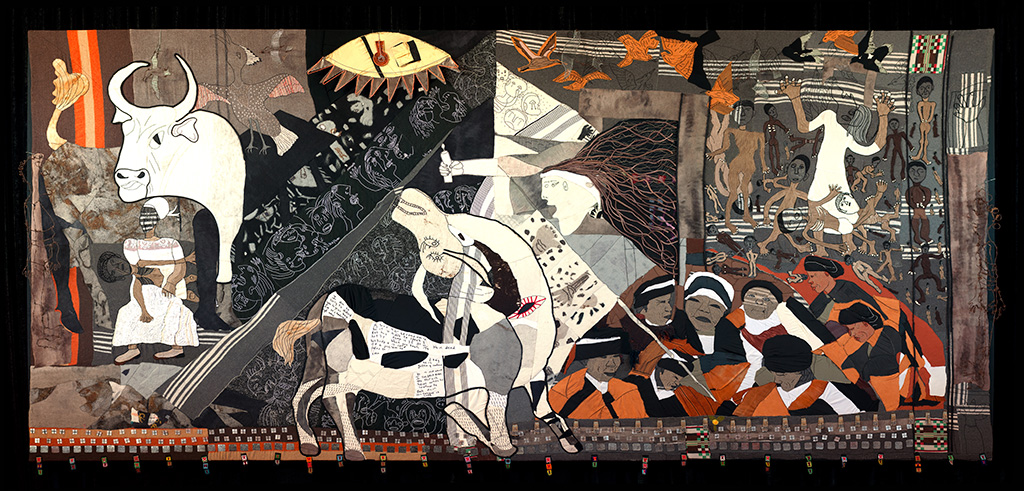
The ‘Keiskamma Guernica’ was exhibited at the Venice Biennale and the Smithsonian Institute in Washington. Image credit: James Walsh
One of Hamburg’s oldest residents is also its most endearing. At 96 the redoubtable Susan Palisa stub- bornly ignores her employer’s best attempts to convince her to retire. Visit her in her rondavel and she will introduce you to Apologise the dog, Actually the cat and Rooster the pig.
If coffee is your passion, then you share it with Garvey McConnell, who roasts his own coffee four times a week and has an encyclopaedic knowledge of – and a passion for – the brew. Garvey and his wife Karen discovered Hamburg 10 years ago and immediately relocated from Fish Hoek. First serving coffee from a converted rain-tank in his garden, Garvey now has several Hand Made Coffee outlets in East London and Grahamstown. The unlikely entrepreneur, though, is somewhat annoyed at his success. ‘Now they want me to open in Cape Town, for goodness sake! I came here to walk on the beach.’
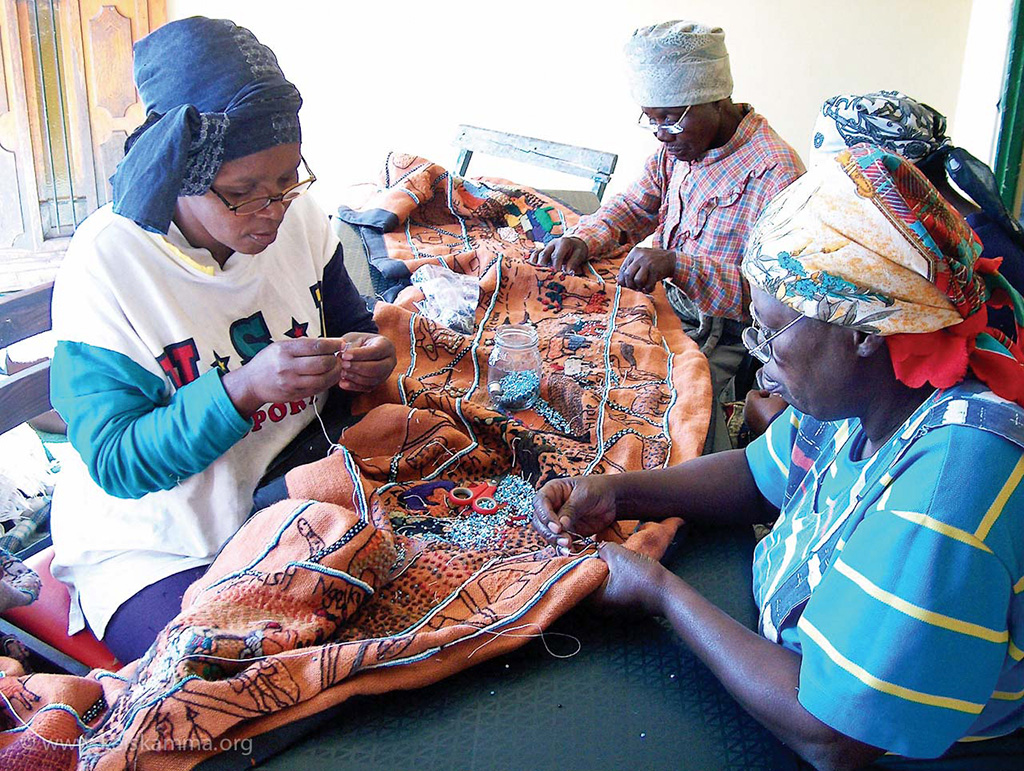
stitching the huge ‘Keiskamma Tapestry’. Image credit: James Walsh
Hamburg’s ‘fame’ is largely thanks to the Keiskamma Trust, a development organisation that offers a range of community services including medical support, early childhood education and food gardens. The Trust’s Music Academy, founded by leading flautist Helen Vosloo, teaches 133 disadvantaged youngsters, some of whom have even performed in England and Germany.
However, what’s gained the Trust its greatest acclaim – and some unlikely fans – is its Art Project. Founder Dr Carol Hofmeyr believed that tackling the HIV/Aids crisis in the community required not only education and medical intervention but an initiative that gave people a sense of pride, self-worth and the dignity of an income. Today, 150 previously unemployed women craft exquisite fabric artworks that are bought for private collections around the world.

Wash day.Image credit: James Walsh
Every two years the project undertakes a major work, referencing historical events and making a socio-political statement relevant to our time. Past works include the ‘Keiskamma Tapestry’, which tells the history of the region from the San to Mandela. At 122 metres long, it’s one of the largest artworks in the world, and it took 110 artists six months to complete. It now hangs permanently in the parliament buildings in Cape Town.
The ‘Keiskamma Altarpiece’ is the Art Project’s most celebrated accomplishment. This multi-layered work, measuring more than 100-square-metres, has toured Canada, the USA, England and Germany. Keiskamma Trust counsellor Eunice Manganye gained notoriety for using her ample bosom to hustle Hollywood actor Richard Gere aside at a showing of the ‘Altarpiece’ in Toronto. When informed that he was a famous actor, Eunice said, ‘So? I don’t care. He was blocking people’s view!’ After that, the two got on famously, making the front page of the Toronto Sun the next day.
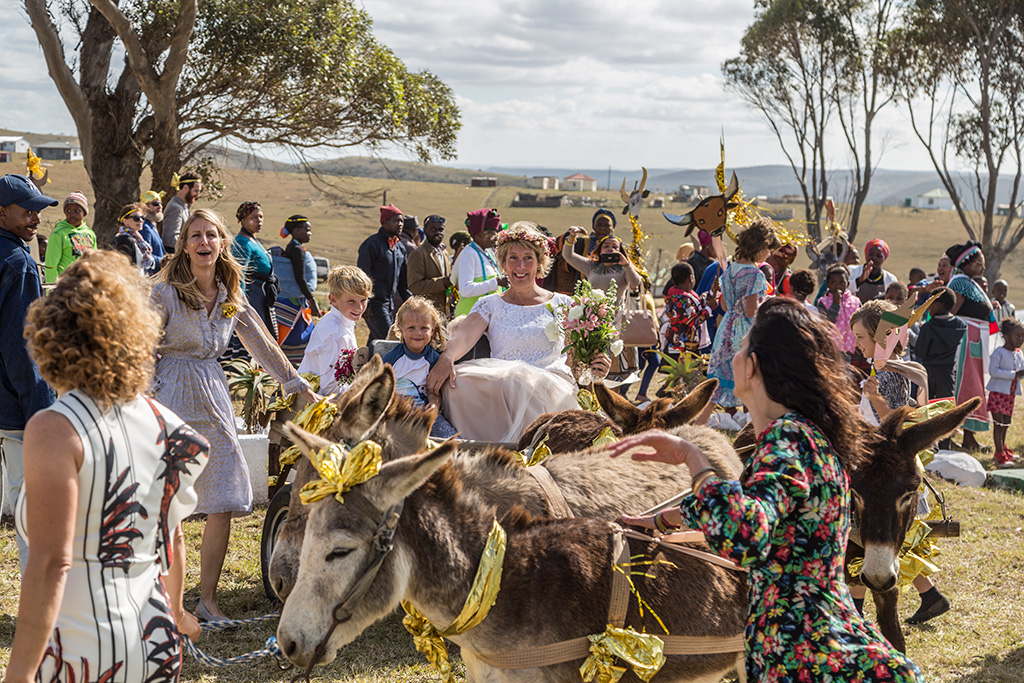
here comes the bride … Hamburg style. Image credit: James Walsh
Impressed by Eunice’s no-nonsense approach, Richard’s brother, Professor David Gere, invited her to take the ‘Altarpiece’ to UCLA, where he heads the Department of World Arts and Cultures. Eunice became, according to David, ‘something of a minor rock star’ in Los Angeles, inter alia advising the gay community on fashion and press-ganging UCLA students into an impromptu choir to sing in isiXhosa for the unveiling of the artwork. When not on tour, Eunice and the ‘Altarpiece’ are at home in Hamburg.

There’s birding, boating and fishing on the tranquil Keiskamma Estuary. Image credit: Lynnley Watson
It’s the Art Project that also lures a regular but unusual visitor to Hamburg. Richard Walter John Montagu Douglas Scott, the Duke of Buccleuch and Queensbury, and the largest private land-owner in the United Kingdom, comes to commission tapestries for his collection. That’s how artworks stitched to the sound of isiXhosa harmonies in this crazy little village came to hang in one of the world’s finest private art collections, in a Scottish castle, alongside works by Da Vinci, Rembrandt, Holbein and Gainsborough.
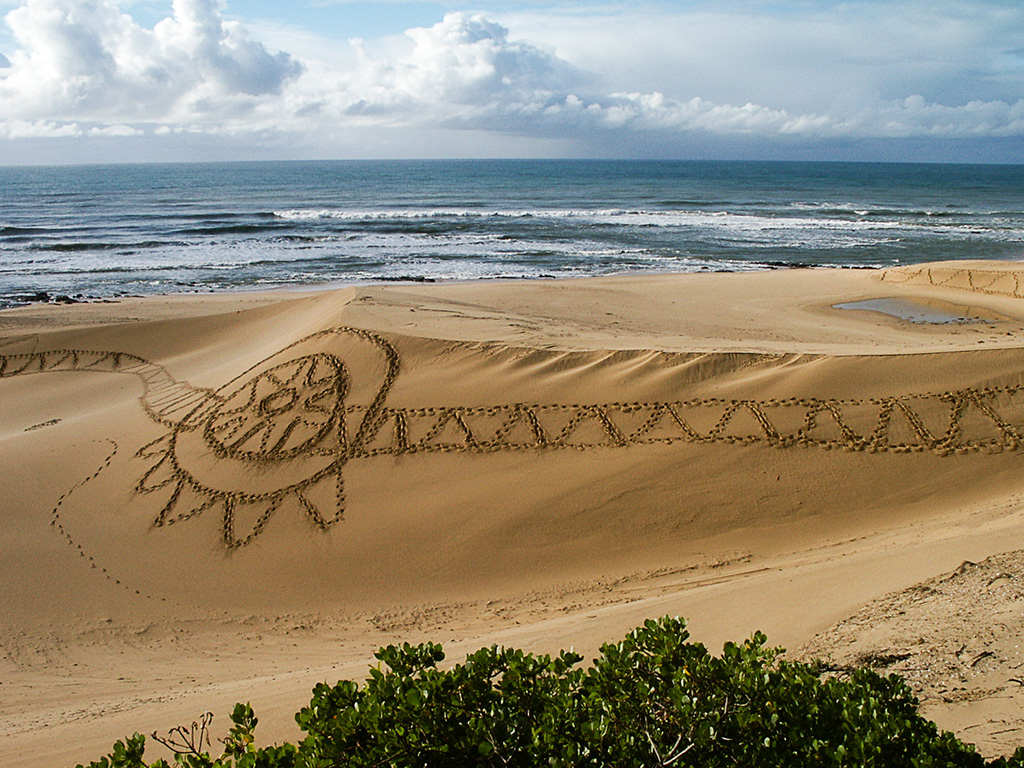
Vuyisile Gaba’s dune art is danced into the sand at night. Image credit: supplied
Far from being stand-offish and affected, Richard could not be more down-to-earth. He happily performs Scottish jigs for the kids from the music academy and regales them with tales of ‘Rabbie Burrrns’.
The village has only a handful of cars so most transport is provided by the ubiquitous donkey carts that ferry everything from preschool children, to firewood, to furniture … to brides. Did I mention Hamburg is undeveloped? Then, a few years ago, to the delight of the community it was selected as an urban regeneration project. The government consulted with the community to establish their needs. They needed better roads, they needed houses, a new clinic … jobs. What did they get? A R50-millon artist’s residence with apartments and dance studios. It stood empty for several years and is now a B&B. They got a marine environmental centre. It stands empty. They got a new municipal office. It stands empty. Oh, eventually they did get a new clinic. As the Americans say, go figure!
So, if you do find yourself on the R72 between East London and Port Alfred and you see the tatty sign pointing down a road that remains untarred, take some time out and have a look. It’s a crazy little village with quite a story to share.

Plan your trip
Getting There
Hamburg lies 14km off the R72, exactly halfway between East London and Port Alfred. Authorities promise they’re going to tar the road this year!
Need to Know
Fill up your tank; we got no petrol. Bring cash; we got no ATM. Shop on the way; we got no supermarkets and the trading store has only the basics.
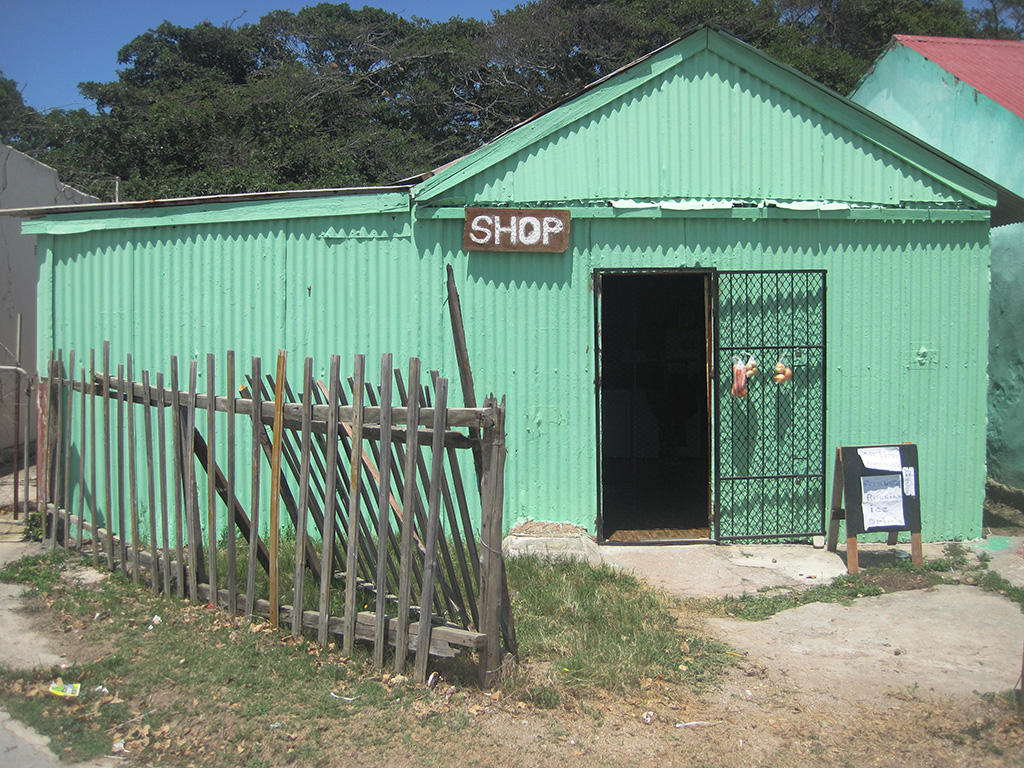
Hamburg CBD. Image credit: Supplied
Stay There
Keiskamma Cottages are self-catering with sea or river views, and three double bedrooms. From R1,000. 082-600-7341
The Perch Cottages, with great views of the sea and estuary, are self-catering with two and three bedrooms respectively. From R500 a cottage. 082-463-6047
Hamburg Caravan Park has 31 sites on the banks of the Keiskamma Estuary. From R250 a site. 084-799-2724
Hamburg Backpackers has three private rooms (one double, two three-bedded) with private bathrooms and a shared kitchen. R600 a room. 072-874-4927
The Rondavels are two double units (add a bed on request), with off-the-grid solar and gas power plus kitchenettes. From R300 each. 082-776-3622

Do Rego’s singalong
Do This
Visiting the Keiskamma Trust is an absolute must. Contact Andy Hofmeyr (082-600-7341) or Cebo Mvubu (063-173-3133) to view the ‘Keiskamma Altarpiece’. The Trust’s fabric artworks are sold in the shop, at outlets overseas or online at keiskamma.org.
You’ll find the Music Academy opposite Snow Goose bottle store.
Guide Alan Booth will take you on an amazing canoeing trip between the islands on the estuary. From R250 pp, canoes included. 082-783-1288
There’s rock, surf and estuary fishing. Locals at the pub are a good source of info on where to go, and what bait to use.
Birding guide Roy Dowling will find you numerous forest, sea and estuarine species. 072-348-3154
One of the nicest of countless walks is to Umtana River Mouth, 6km along the beach to the right; return along the beach or through the forest. 4x4s can also do the forest route.
Treasure hunt southwards along the beach for a plethora of shells and perhaps a shard of Qing porcelain.
Watch Susan Palisa dance, see Vuyisile Gaba’s beach art, as well as an umlungu wedding Hamburg style on YouTube (search their names).
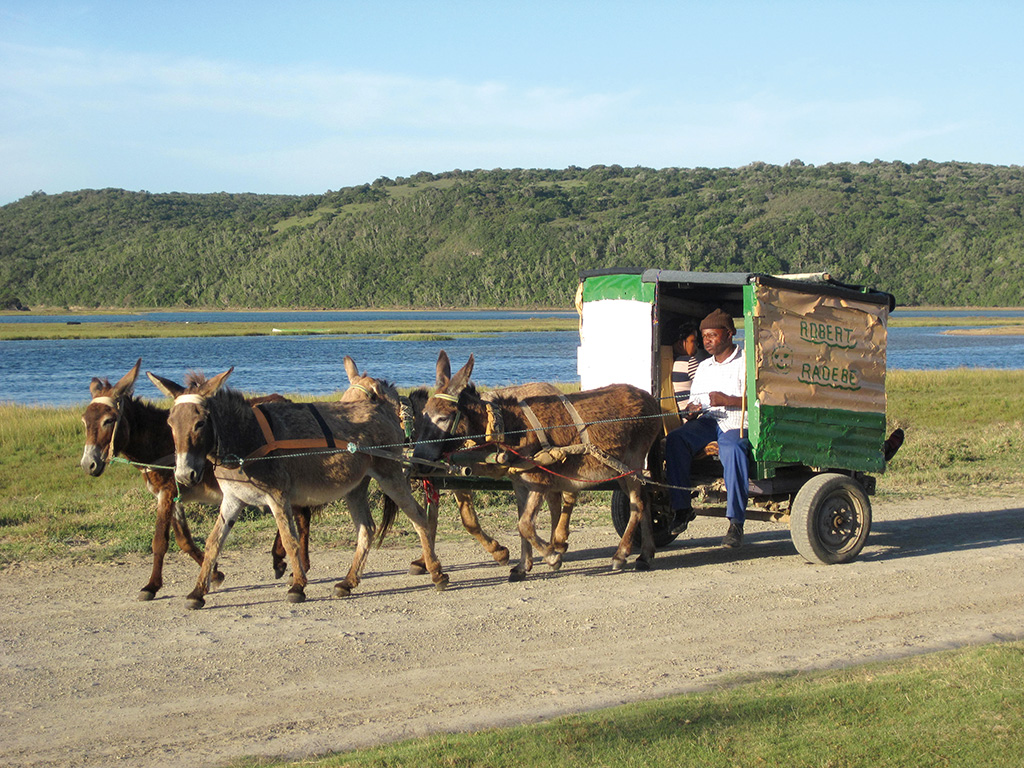
Robert Radebe’s Taxi. Image credit: supplied
Eat Here
Not much choice, I’m afraid. Do Rego’s Cabin on the estuary is the only pub/restaurant in town. Most Sundays include a bring-and-braai and a good old singalong. Call Barry in advance to check if they’re open. 084-799-2724
A great alternative is to have a traditional Xhosa meal prepared for you and served in one of the small, neat homes in the village. Author Andy Hofmeyr will find you a chef. 082-600-7341
This article was first published in the February 2020 issue of Getaway magazine.
Get this issue →
All prices correct at publication, but are subject to change at each establishment’s discretion. Please check with them before booking or buying.
